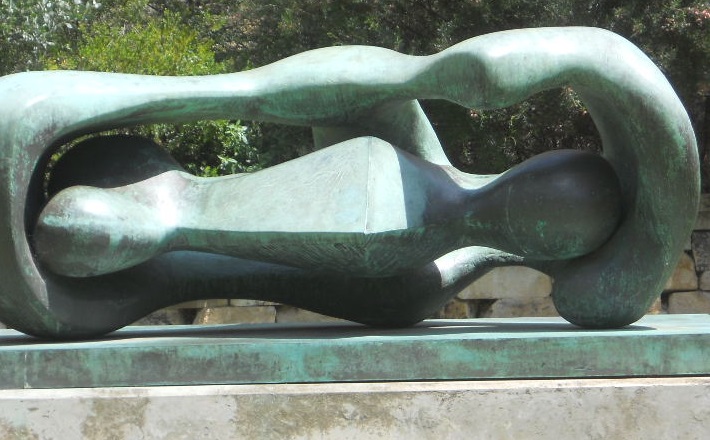Commentary on 1 Corinthians 13:1-13
This is perhaps the most widely recognized and quoted passage anywhere in the Pauline letters, which poses both a challenge and an opportunity for preachers.
Of course, the text is used often at weddings, because it is (incorrectly) understood as praising the value of romantic, human love. What is often missed, and perhaps actively ignored, is that this text was first written to a community that was having a very difficult time staying together. Perhaps preached with that in mind, it makes a surprisingly helpful text for a wedding! It is in the difficult realities of relationships and communities that the love described by Paul needs to be lived out in costly ways, and because of that dynamic this text holds promise for preaching to the gathered people of God this Sunday.
Last Sunday’s text from chapter 12 discussed the various gifts of the Spirit given to the church; that topic will return in chapter 14. The intervening chapter 13 only seems to be an interruption. In fact, chapter 13 is the key. It is unfortunate that the lectionary omits 12:31b. This Sunday may be the time to reach back and pick up that crucial half verse. There, most translations come close to the expression of the NRSV, in which love is introduced as “a still more excellent way.” It certainly is that. However, such renderings do not really capture the point. New English Translation translates the phrase as ‘beyond comparison,” and that is better. More precisely, the Greek phrase indicates something like “beyond measuring,” and hearing that is important because measuring themselves, their abilities, and their status relative to one another seems to have become something of an obsession within the Corinthian church. Paul wants to move them past all of this to a way that is “beyond measuring.” Love is the shape of life that has been set free from the competition that is disrupting the Corinthian church.
The Corinthians were actively pursuing some of the things that Paul mentions in the opening verses of chapter 13 such as speaking in tongues and knowing “mysteries.” There may be nothing wrong with such things in themselves, but if in the process people forget about loving their brothers and sisters, such things end up being worthless. Without love, it does not matter what budgets, buildings, or missional strategies we have. Such things do not give the church the shape that God desires. We may pursue various forms of spirituality, or proper doctrine, or activism in the name of justice. However, in our pursuit of these otherwise fine things, we must not forget that the church is called to be a community that practices love.
In verses 4-8a, “love” is the subject of 16 verbs in a row; it happens in every phrase. That may not come through clearly in English translations, where love is described by some rather static adjectives (“love is patient, love is kind”). Instead, Paul’s claims are that love “shows patience” and “acts with kindness.” Here, love is a busy, active thing that never ceases to work. It is always finding ways to express itself for the good of others. The point is not a flowery description of what love “is” in some abstract and theoretical sense, but of what love does, and especially what love does to one’s brother or sister in the church.
As the last element in this parade of love’s activities is the claim that it does not end (literally, “it does not fall”). Paul names 3 things which are of central value to the church: faith, hope, and love (verse 13). These three form a brief summary of the life of the church, repeated elsewhere in the New Testament (1 Thessalonians 1:3, 5:8; Colossians 1:4-5; Hebrews 10:22-24; 1 Peter 1:21-22). Faith will one day become sight, and hope will end in fulfillment (Romans 8:24-25). Love will still remain, however, because God’s love will not fall, fail, or falter. We are drawn into that love of God, and we are remade by that love so that we become lovers.
Paul never says that such love feels good, and this is where the typical use of this chapter goes off the rails. Such misunderstanding creates trouble not only for expectations regarding the day-to-day realities of marriage, but also for the realities of the church. Because of our disordered assumptions about what love actually is, we often act as though the mission of the church is to gather like-minded and likeable people together. We think that in such a community it will be easy for us to love or, more honestly, to “feel the love.” But true love is not measured by how good it makes us feel. In the context of 1 Corinthians, it would be better to say that the measure of love is its capacity for tension and disagreement without division.1
If the preacher succeeds in rescuing this chapter from its romantic captivity, a second danger presents itself. This description of love could be heard (and even preached, much to the preacher’s shame) as a burden placed upon us. But who can love so selflessly as this chapter’s description? At this point, sometimes an escape is tried by claiming that this is a description of God’s own “agape” love, and that there is not an imperative directed at us anywhere in the chapter. That may be true, but it is not sufficient. Paul certainly expects that this love will be lived out by the church; that’s the whole purpose of this chapter. There is good news here, though. Verse 12 affirms that we have already been fully known, i.e. by God. We are not simply left to our own capacity for love. We can love because God has already fully known us and loved us anyway, and is working to make our lives and our communities look more and more like this busy, active, tireless love.
Notes:
1 See Krister Stendahl, “Preaching from the Pauline Epistles,” in Biblical Preaching: An Expositor’s Treasury (Westminster, 1983), pp. 306-326).


January 31, 2016